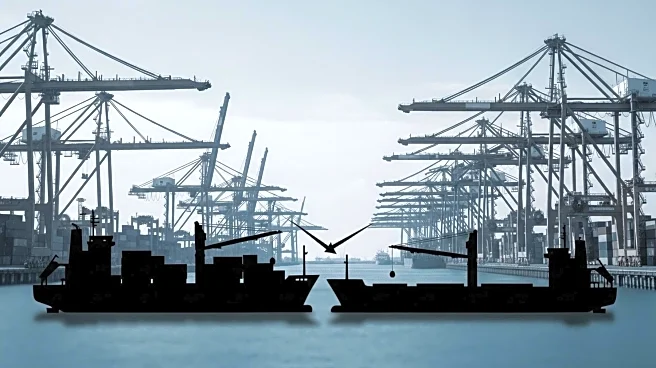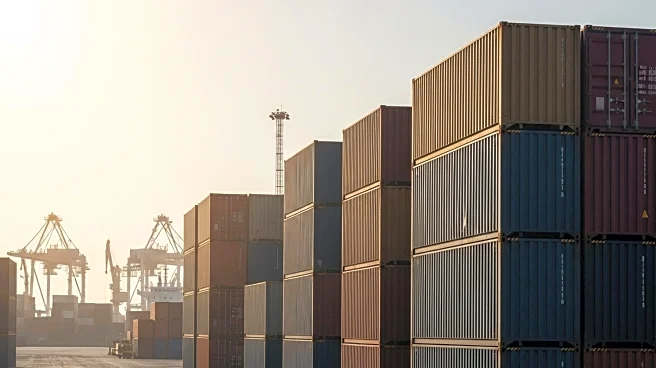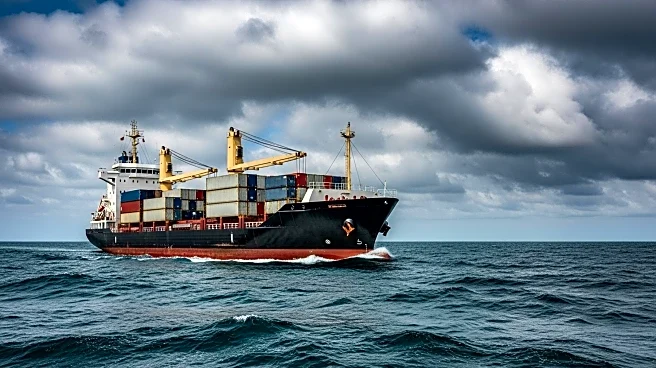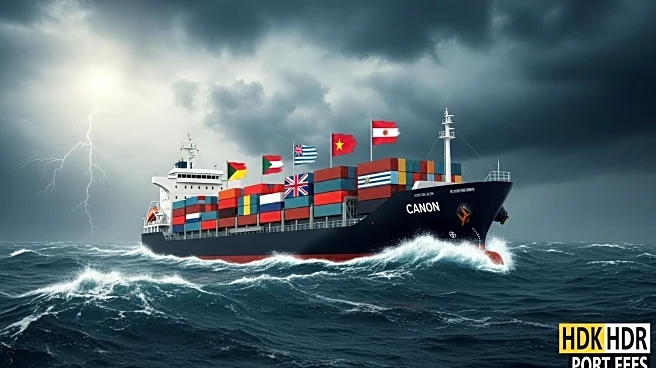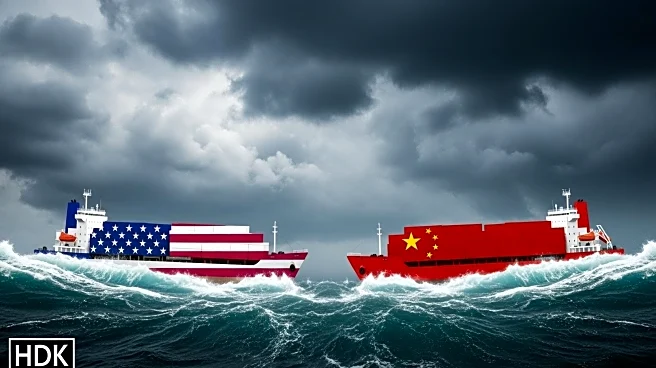What is the story about?
What's Happening?
The Office of the United States Trade Representative (USTR) has announced new port fees targeting the Chinese maritime sector, set to take effect on October 14. These fees were initially announced on April 17, 2025, with a 180-day grace period for vessel owners and operators to adjust their operations. In response, the Chinese Ministry of Transport (MOT) has declared its own set of fees targeting vessels with U.S. connections, as a direct retaliation to the USTR's actions. The Chinese port levies are seen as a violation of international trade principles and the China-U.S. Maritime Agreement, causing significant disruption to maritime trade between the two nations. The fees will apply to various categories of vessels, including those owned or operated by U.S. entities, vessels flying the U.S. flag, and vessels built in the United States.
Why It's Important?
The reciprocal port fees between the U.S. and China represent a significant escalation in trade tensions, particularly affecting the shipping industry. These measures could lead to increased transportation costs for Chinese imports and limit the availability of vessels for Chinese charterers. The impact on U.S. flagged and built vessels may be minimal due to their infrequent calls to China, but the broader implications for U.S.-owned or operated vessels are substantial. This situation highlights the geopolitical jostling between the two countries, with potential repercussions for public shipping companies listed on U.S. stock exchanges. The uncertainty in the market may lead to further freight rate increases and affect global maritime trade dynamics.
What's Next?
The implementation of these fees is expected to cause significant market disruptions, with many vessels already en route to China potentially affected. The tanker market has been described as 'frozen' following the Chinese announcement, with questions remaining about exemptions for vessels with fixtures predating the announcement. The Chinese Ministry of Transport is expected to issue detailed implementation measures soon, which will clarify the situation further. Stakeholders in the shipping industry are closely monitoring developments, as the fees could reshape chartering practices and influence freight rates.
Beyond the Headlines
The introduction of reciprocal port fees may have long-term implications for international maritime trade agreements and the regulatory environment. The situation underscores the complexities of global trade relations and the potential for economic policies to impact industries beyond their immediate scope. The evolving trade dynamics between the U.S. and China could lead to shifts in shipping routes and strategies, as companies seek to mitigate the impact of these fees.
AI Generated Content
Do you find this article useful?
